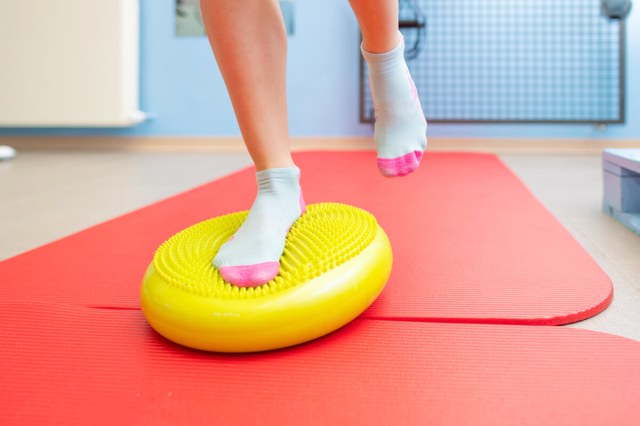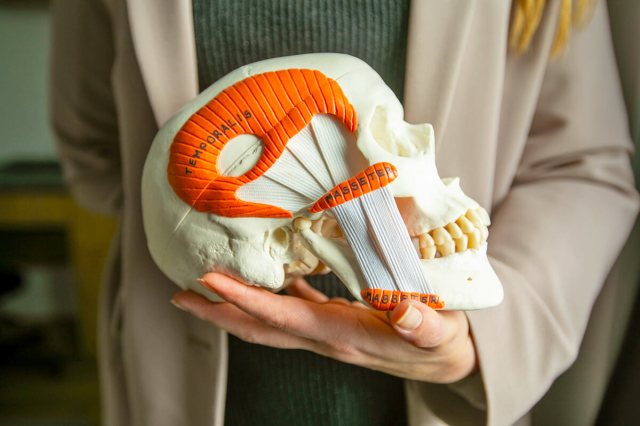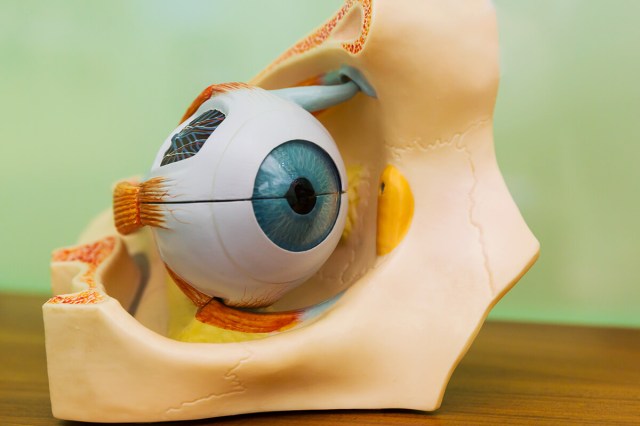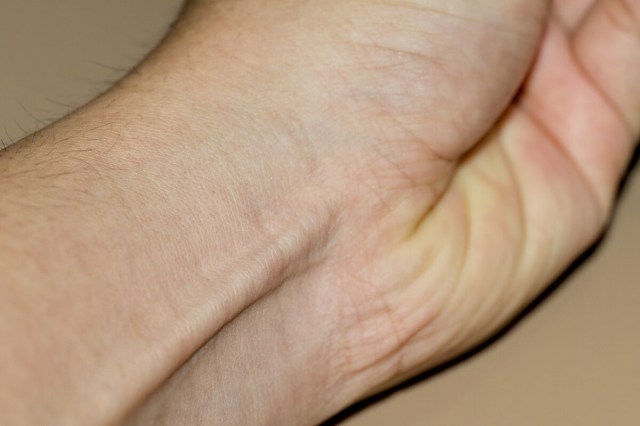
They Provide Humans With a “Sixth Sense”
You’re familiar with the body’s five senses (taste, touch, smell, sight, and hearing) but there’s a little-known sixth sense provided by receptors in your muscles, tendons, and skin known as “proprioception.” The information sent by those receptors, once processed by the cerebellum, allows your brain to interpret the position of your body in space.
Impairment of this sense can affect even the most physically fit among us. During the 2020 Olympics (held in 2021 due to the COVID-19 pandemic), U.S. gymnast Simone Biles famously experienced a condition known as the “twisties,” which is essentially a temporary impairment of a type of proprioception known as “air awareness” — basically your brain and body have a slight communication breakdown that results in the body no longer accurately sensing its position while airborne. Luckily, most of us don’t require gymnast-level attunement to our proprioceptors in our daily lives, but it goes to show how our muscles do much more than just physically move us from place to place.

Your Strongest Muscle Is the Masseter
People often say the tongue is the strongest muscle in the human body, but that’s actually incorrect in more ways than one. First off, the tongue isn’t one muscle but a collection of eight muscles, each with an important role for talking, eating, and anchoring to the skeleton. And while it’s true a healthy tongue rarely shows signs of fatigue, its strength by volume is dwarfed by that of the masseter, known more commonly as the jaw muscle.
Working in coordination with other muscles located in the jaw, the masseter can deliver up to 200 pounds of force on the molars. While the gluteus maximus (aka your butt) is the largest muscle and the heart is by far the hardest working, no muscle singlehandedly delivers as much power as the masseter.

Your Muscles Shiver To Warm Your Body
Although mammals are often referred to as “warm-blooded,” muscles actually provide up to 85% of the warmth in your body, because every time a muscle contracts, it produces heat. When your body gets cold, the brain’s hypothalamus first reduces blood flow to the skin while blood returning from your limbs enters deep veins. This helps entrap heat in the body for longer. But when this doesn’t quite do the trick, the brain then sends random signals to your skeletal muscles, causing them to contract and produce more heat to help warm your body — what we experience as shivering.
More Interesting Reads

Human Eye Muscles Make 100,000 Movements a Day
When you think of muscles, you may picture the elegant pulley system that is the bicep/tricep duo or maybe your heart, the primary muscle that makes life possible. However, there are many other hard-working muscles that fly more under the radar, and chief among them are the six muscles (per eye) required for human vision. These muscles make approximately three coordinated movements per second, which comes to about 100,000 such movements total per day.
So why isn’t our vision blurred due to all that constant movement? Well, it turns out our brains anticipate where we’re going to look and ignore the blurry movement it takes to move our eyes in those directions. People have long marveled at the ingenuity of the human eye, but it’s the surrounding muscles that truly enable us to take in the world around us.

Your Body Contains a Few Muscles That Don’t Do Anything
Human bodies are still an evolutionary work in progress, and this can be seen in the many vestigial (aka nonfunctional) muscles left over from our primate past. One example, the pyramidalis muscle in the abdomen, is believed to contract the thin band of connective tissue that runs down the front of your abdomen (known as the linea alba), but it’s no longer needed for that function — in fact, some people don’t have this muscle at all.
Another vestigial muscle is the palmaris longus, which stretches from the wrist to the elbow and is suspected to have aided our ancestors in their grip strength. Around 10% of people don’t have this muscle in either arm. And then there are the auricular muscles, which theoretically aid in the physical movement of our ears by changing the shape of the pinna, the ear’s visible outer portion. Our ancestors stopped using these muscles for that function millions of years ago, although 2025 research shows these muscles may still be handy when trying to distinguish competing sounds.











